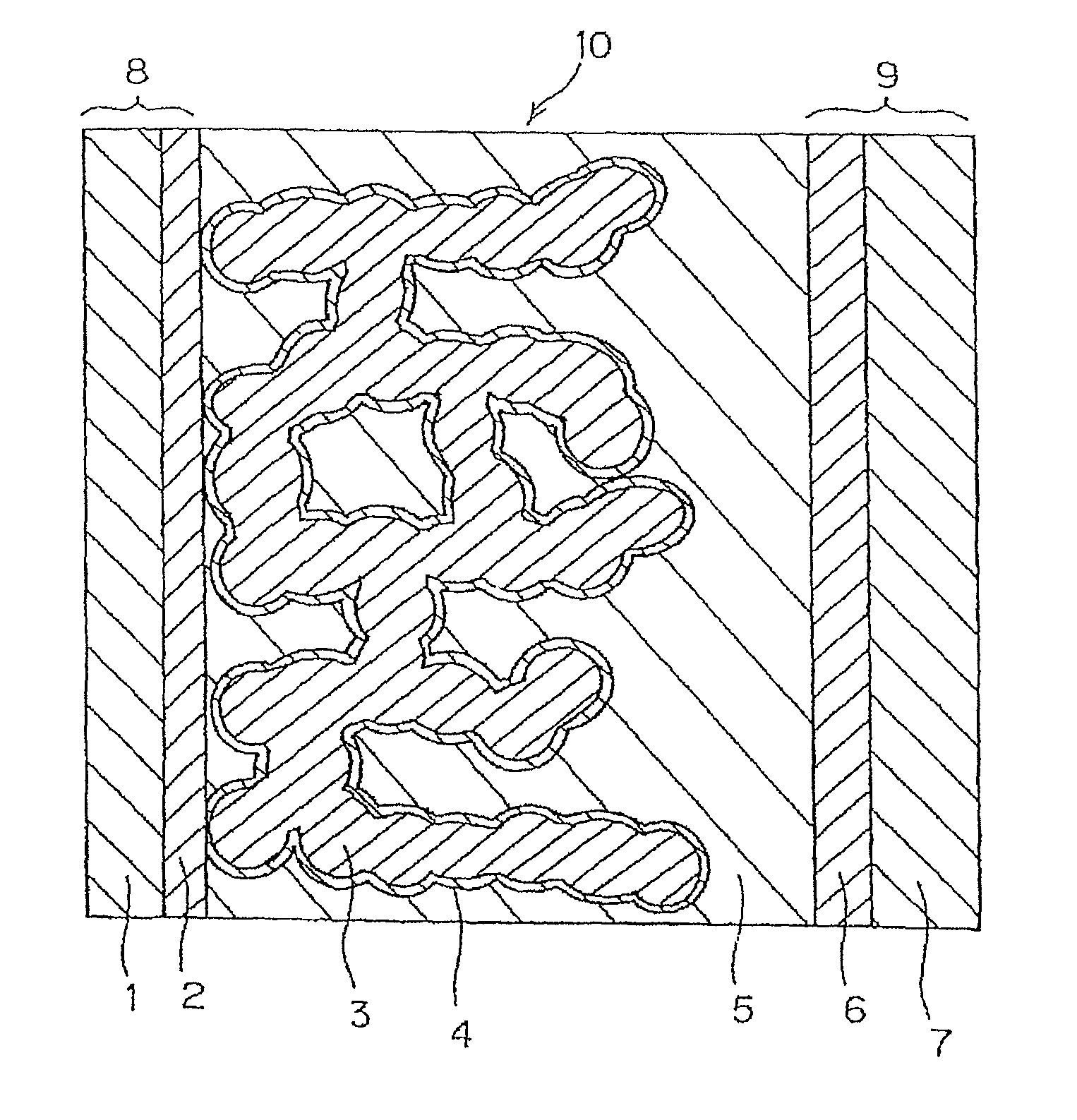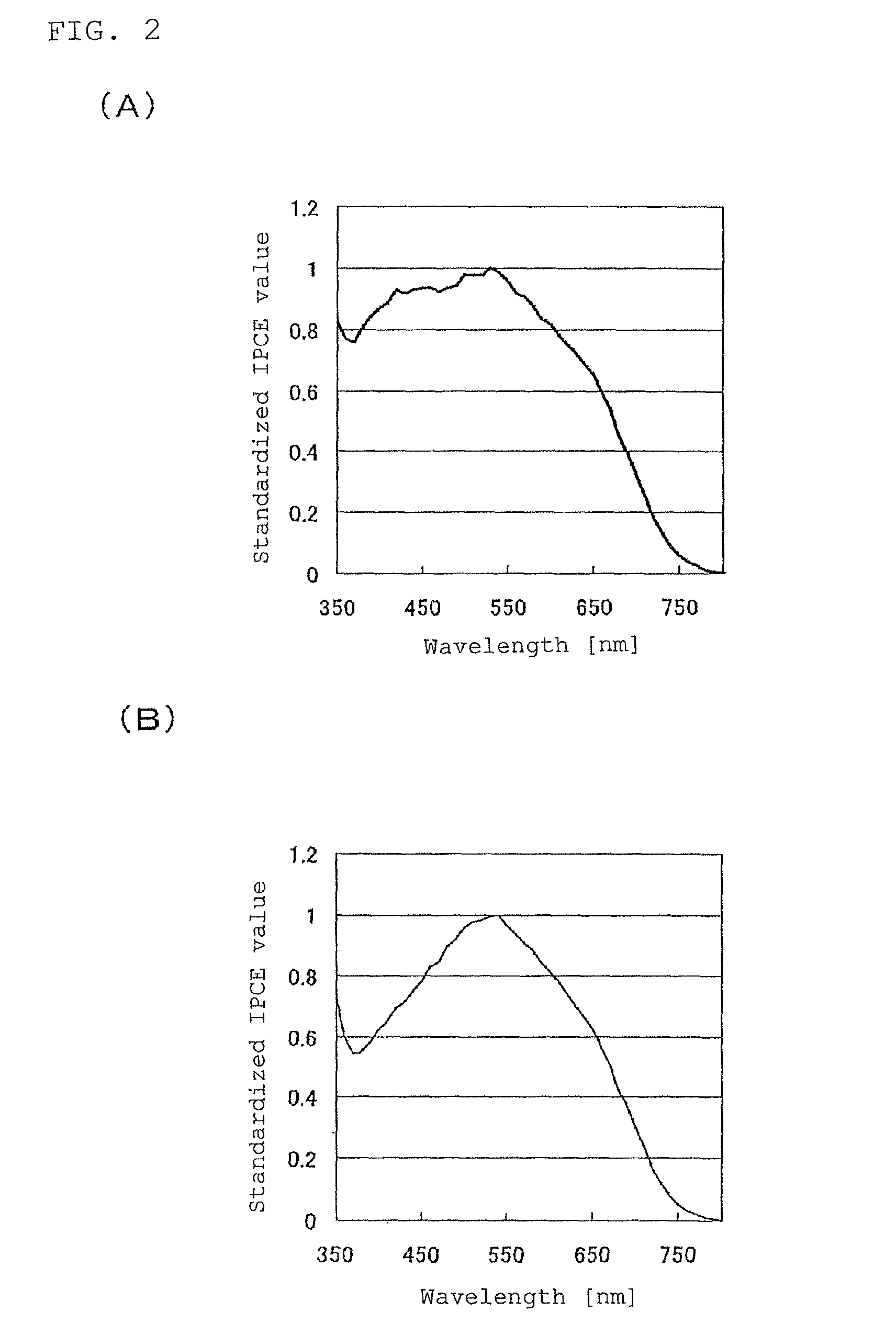Photoelectric conversion element
a technology of conversion elements and photoelectrics, applied in the direction of light-sensitive devices, electrically conductive capacitors, solid-state devices, etc., to achieve the effects of high practical use, improved design properties of elements, and high conversion efficiency and stability
- Summary
- Abstract
- Description
- Claims
- Application Information
AI Technical Summary
Benefits of technology
Problems solved by technology
Method used
Image
Examples
example 1
Production of Porous Metal Oxide Semiconductor
[0118]The porous metal oxide semiconductor layer 3 is formed on the transparent conductive film 2 which is formed of SnO2 obtained by doping fluorine on the transparent substrate 1 formed of glass and which is formed by vacuum deposition, by the following method.
[0119]As the electrode base material 8 in which the transparent conductive film 2 is formed on the transparent substrate 1, using FTO glass (manufactured by Nippon Sheet Glass Co., Ltd.), commercially available titanium oxide paste (product name: TSP-18NR, particle size of 20 nm manufactured by JGC Catalysts and chemicals, Ltd.) was printed on the surface thereof in a transparent conductive film 2 side, to have a film thickness of about 6 μm and an area of about 5 mm×10 mm by the screen printing method, commercially available titanium oxide paste (product name: TSP-400C, particle size of 400 nm manufactured by JGC Catalysts and chemicals, Ltd.) was further coated on the same area...
example 2
[0128]A solar cell element was produced in the same manner as in Example 1, except for using 1-methyl-5-mercapto-1,2,3,4-tetrazole: 1-methyl-1-propyl pyrrolidinium salt (MPPy-MTZT) instead of 1-methyl-5-mercapto-1,2,3,4-tetrazole: 1-methyl-3-ethylimidazolium salt (EMIm-MTZT) as the electrolyte layer 5.
example 3
[0129]A solar cell element was produced in the same manner as in Example 1, except for using 1-methyl-5-mercapto-1,2,3,4-tetrazole: 1,2-dimethyl-3-propyl imidazolium salt (DMPIm-MTZT) instead of 1-methyl-5-mercapto-1,2,3,4-tetrazole: 1-methyl-3-ethylimidazolium salt (EMIm-MTZT) as the electrolyte layer 5.
PUM
 Login to View More
Login to View More Abstract
Description
Claims
Application Information
 Login to View More
Login to View More - R&D
- Intellectual Property
- Life Sciences
- Materials
- Tech Scout
- Unparalleled Data Quality
- Higher Quality Content
- 60% Fewer Hallucinations
Browse by: Latest US Patents, China's latest patents, Technical Efficacy Thesaurus, Application Domain, Technology Topic, Popular Technical Reports.
© 2025 PatSnap. All rights reserved.Legal|Privacy policy|Modern Slavery Act Transparency Statement|Sitemap|About US| Contact US: help@patsnap.com



